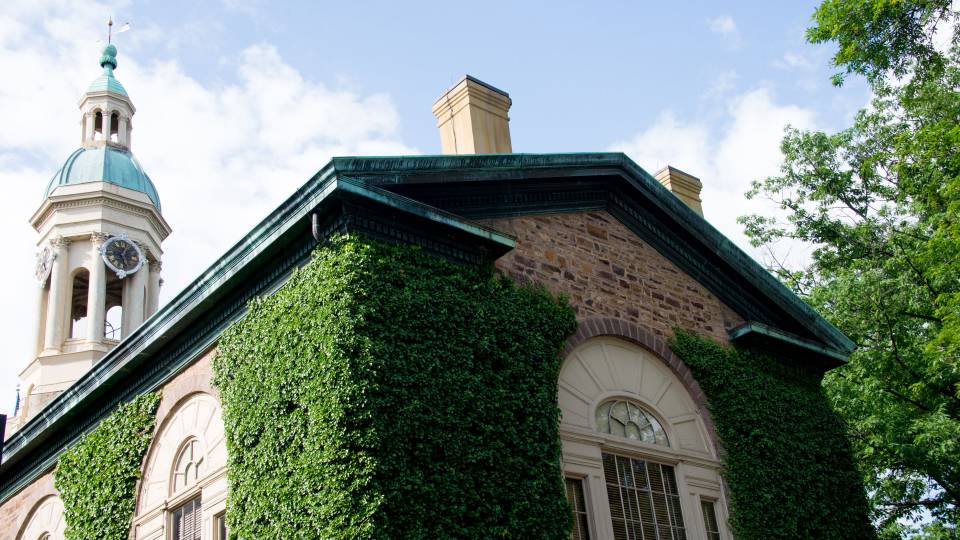Nassau Hall, the centerpiece of the Princeton campus, is both a
University and national landmark. The following is a sampling of its
history:
- Originally known as the College of New Jersey, the University held classes in Elizabeth for one year and in Newark for nine years, before meeting in Princeton's Nassau Hall when it was completed in 1756.
- Designed by architect Robert Smith, the building had three stories and a basement. On each of the three floors, a central corridor ran the length of the building, with all the rooms opening onto the corridor.
- Nassau Hall was the temporary home of the Continental Congress and was the site where the Congress first learned the British had signed a peace treaty granting independence to the former colonies in 1783.
- After a fire in 1802, only the exterior walls of Nassau Hall were left standing. Architect Benjamin Latrobe was hired for the reconstruction. The changes he made to Smith's design were primarily to reduce the danger of fire: brick and stone replaced wood for the floors and the stairs. In addition, the roof was raised about two feet, allowing room for transom lights over the doors.
- Despite the safeguards, another fire in 1855 again left only the exterior walls. Architect John Notman made more extensive changes than his predecessor. Because a spark from a stove was thought to have caused the fire, he installed nine furnaces to provide central heating. He also built towers on either end of the building to house stairways that were removed from interior halls. The tops of the Italianate towers, which rose above the roof line, were removed in 1905.
- As dormitories and classroom buildings were constructed on campus, students and faculty members moved out of Nassau Hall. John Hibben (1912-1932) was the first president to have his office there. By 1924, the building was devoted entirely to offices of the central administration.
- The U.S. Department of the Interior deemed
Nassau Hall a national historic landmark in 1960, signifying its
importance in the Revolutionary War and in the history of the United
States.
More information about the history of Nassau Hall is available on the Seeley Mudd Manuscript Library Web site.





